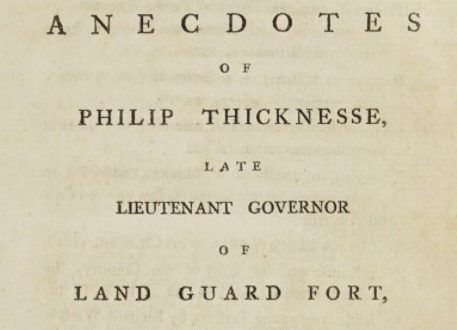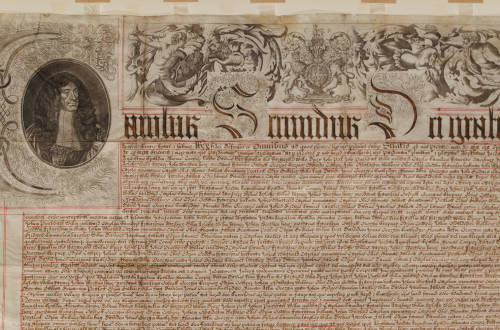As a new Archivist you can feel like a walking oxymoron. An Archivist should know an organisation inside out and be able to respond to every conceivable question about its history authoritatively. During my first week, when I had still not mastered the location of the lavatories, the weight of this expectation was a little overwhelming.
But of course, the real joy of being an Archivist isn’t that of being an expert. The pleasure comes from the gradual accumulation of knowledge, learning new things on a daily basis and knowing the right places to look for answers, if there are answers there to be found! Questions – from staff, pupils, alumni and members of the public become exciting opportunities to share information and make new discoveries.
Nearly a year after having started at Westminster, a fifth form pupil approached me on my way up School and asked if he could see inside the Busby Library. He poured forth a deluge of queries about the School’s buildings and historic collections which I managed, with growing confidence, to answer. It was his last question, a casual aside, which left me floundering for a reply:
What is it, exactly, that an Archivist does?
I’ve given the matter some thought since then and, although I’m not sure that I can give an exact answer, hopefully I can give a clearer idea of what it is I do, and why I think it’s important.
As an Archivist I feel I have three core responsibilities from which all of my day to day work devolves. The first of these responsibilities is to the school’s existing historic collections, its past. I work to ensure that these are kept in good condition and stored appropriately to ensure their continuing survival, so that pupils at Westminster may benefit from them for many generations into the future. This work involves a wide variety of tasks. Listing, cataloguing and completing inventories of the collections (so that we know what we have, where it is and in what condition) is the basis for all further work. All of the items in the schools collections are made from materials that will naturally decay over time – paper, paint, parchment, textile, metal and plastic. However, extreme levels and fluctuations of temperature and relative humidity, as well as light and pollution can rapidly increase the rate of this decay. Checking the environmental conditions where items are stored by examining regular readings from thermohygrometers (devices which record temperature and relative humidity) help us to monitor this situation and take actions to protect items where necessary. Sometimes things have deteriorated to the extent where the work of a specialist conservator is required to help stabilize an item and protect it against further damage. Without all this care and attention the school’s historic possessions could be lost, stolen or simply disintegrate.
Whilst all these actions help protect the collections for the future, the second responsibility is to make sure that they are appreciated today. This can be a careful balancing act. Displaying material will inevitably increase the rate at which its condition deteriorates. Over a short space of time this deterioration might be imperceptible, but it does occur. However, there is little point in spending time and money preserving items if they are never to be used.
Both getting the archives out into the classroom and pupils into the archive are on-going projects. In addition, exhibitions and displays in the Library provide an opportunity to put the spotlight on aspects of the collection that are felt to be of importance. Naturally, interest in the collections extends outside of the immediate school community. Many items in the school’s possession are of national and international importance. I answer queries from members of the public (about 300 each year) and supervise visiting researchers throughout the year. The Archive has a web-presence which will ultimately mean that documents previously only accessible to a few people at a time can be enjoyed by many all over the world. This year I have been serializing, day-by-day, the diary of a pupil who attended the school over 100 years ago. In November, there was a screening of films made by Westminster pupils between 1939 and 1970 which I hope to repeat this year.
My final responsibility is to the future. It is important that the collections continue to grow and develop, reflecting school life today. Donations are regularly received of photographs, diaries, scrap-books and other material which all serve to add to the richness of the archive. Occasionally the school purchases items that will fill a gap in the existing collections. Elements of the school’s own administrative records will become the archives of tomorrow, but not everything can be kept so careful selection processes must be undertaken. Of course, more and more records are being created electronically and require preservation in digital format. Those of you who remember what a 3½” inch floppy disc is will understand that ensuring the long-term survival of electronic files against the threat of obsolescence is one of the biggest challenges facing the archive profession today. It is important we avoid having a digital black hole in our records. There are generations of history in our care and it is important that we don’t become the missing link in the chain.



